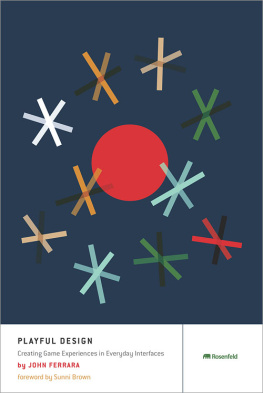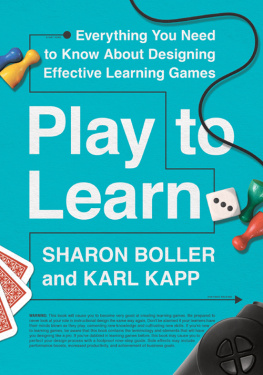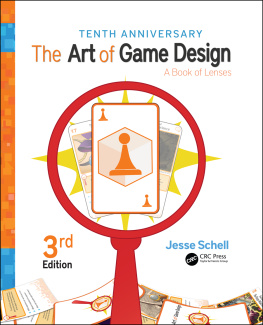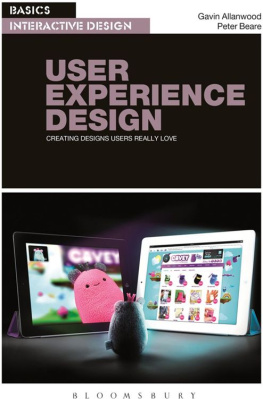Who Should Read This Book?
Playful Design is primarily written for designers of conventional software, websites, mobile apps, and other computer-mediated user experiences who are looking for novel approaches to creating compelling, satisfying, and enjoyable designs. Its well suited to anyone who specializes in human-computer interaction, digital product strategy, interaction design, information architecture, usability engineering, graphic design, application development, or similar roles.
This book also is intended to be accessible to a broader audience of readers who arent user experience (UX) practitioners, but who want to learn more about how games can achieve great things in the real world. If this sounds like you, then you might like to start by skipping ahead to , where I survey a variety of case studies, before circling back to the beginning of the book.
Game designers will find new ways to think about the impact they can have on the world. Though much of the content in this book reviews practices and design patterns with which youre probably very familiar (especially in ), I hope that the overall picture I draw will lead to fresh insights into your work. I also invite you to explore how opening a relationship with the UX design community can broaden the reach of games.
I do not assume that readers have a ton of experience playing video games, although I believe you need to play a pretty good amount to design well for them. Its okay if youre not the worlds biggest gamer, but maybe you can be persuaded to get into what I believe is a very worthwhile use of your time.
If you do play games, then I think youre going to have a lot of fun with this book. You can consider the countless hours youve spent playing them to have been study sessions, as all of your experience will help you to get more out of every single chapter. Youre well prepared to reflect on the design of games and their broader significance in everyday life.
Whats in This Book?
This book is a call to action for UX designers to incorporate game design into their toolkit, and a guide for how to apply it most effectively.
The Introduction offers my perspective on recent fads in the application of game design, and an explanation of why I believe they have been fundamentally flawed.
Part I: Playful Thinking
makes a case for taking games seriously as a form of human-computer interaction, and explains the reasons UX designers in particular should take an active interest in them.
provides a basic theoretical background on games, defining their primary characteristics and exploring their relationship to everyday life.
presents a model for thinking about player experiences that draws on an established UX model. This chapter is intended to provide a basis for thinking through the design choices that make games challenging, satisfying, and enjoyable.
reviews some of the most common reasons why people feel motivated to play games.
Part II: Designing Game Experiences
is a list of things that you can do to improve your chances of creating a successful design. If youre starting a game project right now and need a quick guide before jumping in, this chapter is a good place to begin.
lays out some of the key decision points that you should think through when coming up with a vision for a game.
describes methods for quickly mocking up prototypes that will save time and money in the design and development of a game.
explains how to evaluate a game with players and get actionable insights for design.
discusses elements of design that can encourage players to adopt certain behaviors in a game and give shape to the experience.
lists some of the most common reward systems employed in games, and provides best practices for their design.
Part III: Playful Design in User Experience
surveys a variety of ways that games have been applied to influence peoples actions in the real world.
takes a look at games that have been designed to help people learn new concepts and skills.
describes how games can convince people to adopt a different point of view.
concludes the book with a speculative look toward the future of games, as suggested by current trends in design.
What Comes with This Book
This books companion website (  rosenfeldmedia.com/books/game-design ) contains more information about how to incorporate game design principles into your user experience design practice. You can also find a calendar of my workshops and presentations, and a place to engage others in conversation. The books diagrams and other illustrations are available (when possible, under a Creative Commons license) for you to download and include in your own presentations. You can find these on Flickr at www.flickr.com/photos/rosenfeldmedia/sets/ .
rosenfeldmedia.com/books/game-design ) contains more information about how to incorporate game design principles into your user experience design practice. You can also find a calendar of my workshops and presentations, and a place to engage others in conversation. The books diagrams and other illustrations are available (when possible, under a Creative Commons license) for you to download and include in your own presentations. You can find these on Flickr at www.flickr.com/photos/rosenfeldmedia/sets/ .
Frequently Asked Questions
What do you mean when you refer to video games?
Throughout this book, I use the phrase video games to refer to computer-mediated games of all types, from World of Warcraft to Words with Friends . This may be a more general usage than a purist would select, but I use it because its a conventional and recognizable way to distinguish this subtype of games from other forms. I use the term games to refer to the broader class of experiences that includes video games as well as board games, sports, card games, gambling, and so on. A more robust discussion of what it means for something to be a game or a video game is found in .
Are you suggesting that UX designers should become game designers?
Im proposing that UX designers adopt game design as a competency that they can enlist, alongside our existing competencies, to solve real problems. I argue that, to do this effectively, it is critical for us to acquire the theory, skills, and processes that will allow us to build truly rewarding game experiences. This book is intended to lay the groundwork for UX practitioners to begin developing this capability in earnest. So, no, Im not suggesting that we should rethink our careers, but rather that we should grow within them. For more about why we should, see .
Are video games really that important?
This depends on what theyre doing, but they absolutely can be. Today, video games are being designed that forge connections between people, teach subjects in schools, encourage healthier living, support charitable giving, fight world hunger, and promote the cause of peace. I believe that games are up to these tasks and can offer fresh approaches to making the world a better place.







![Jesse Schell [Jesse Schell] - The Art of Game Design, 2nd Edition](/uploads/posts/book/119435/thumbs/jesse-schell-jesse-schell-the-art-of-game.jpg)



 rosenfeldmedia.com/books/game-design ) contains more information about how to incorporate game design principles into your user experience design practice. You can also find a calendar of my workshops and presentations, and a place to engage others in conversation. The books diagrams and other illustrations are available (when possible, under a Creative Commons license) for you to download and include in your own presentations. You can find these on Flickr at www.flickr.com/photos/rosenfeldmedia/sets/ .
rosenfeldmedia.com/books/game-design ) contains more information about how to incorporate game design principles into your user experience design practice. You can also find a calendar of my workshops and presentations, and a place to engage others in conversation. The books diagrams and other illustrations are available (when possible, under a Creative Commons license) for you to download and include in your own presentations. You can find these on Flickr at www.flickr.com/photos/rosenfeldmedia/sets/ .